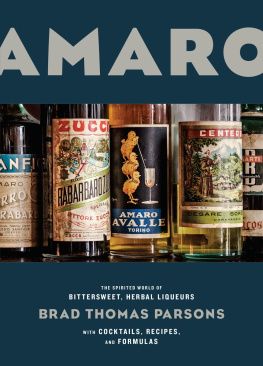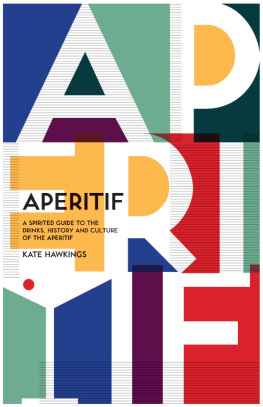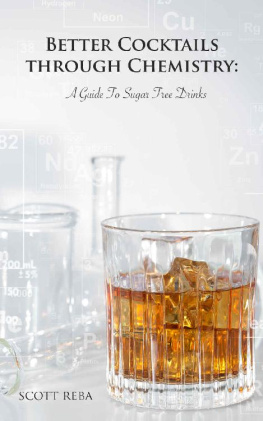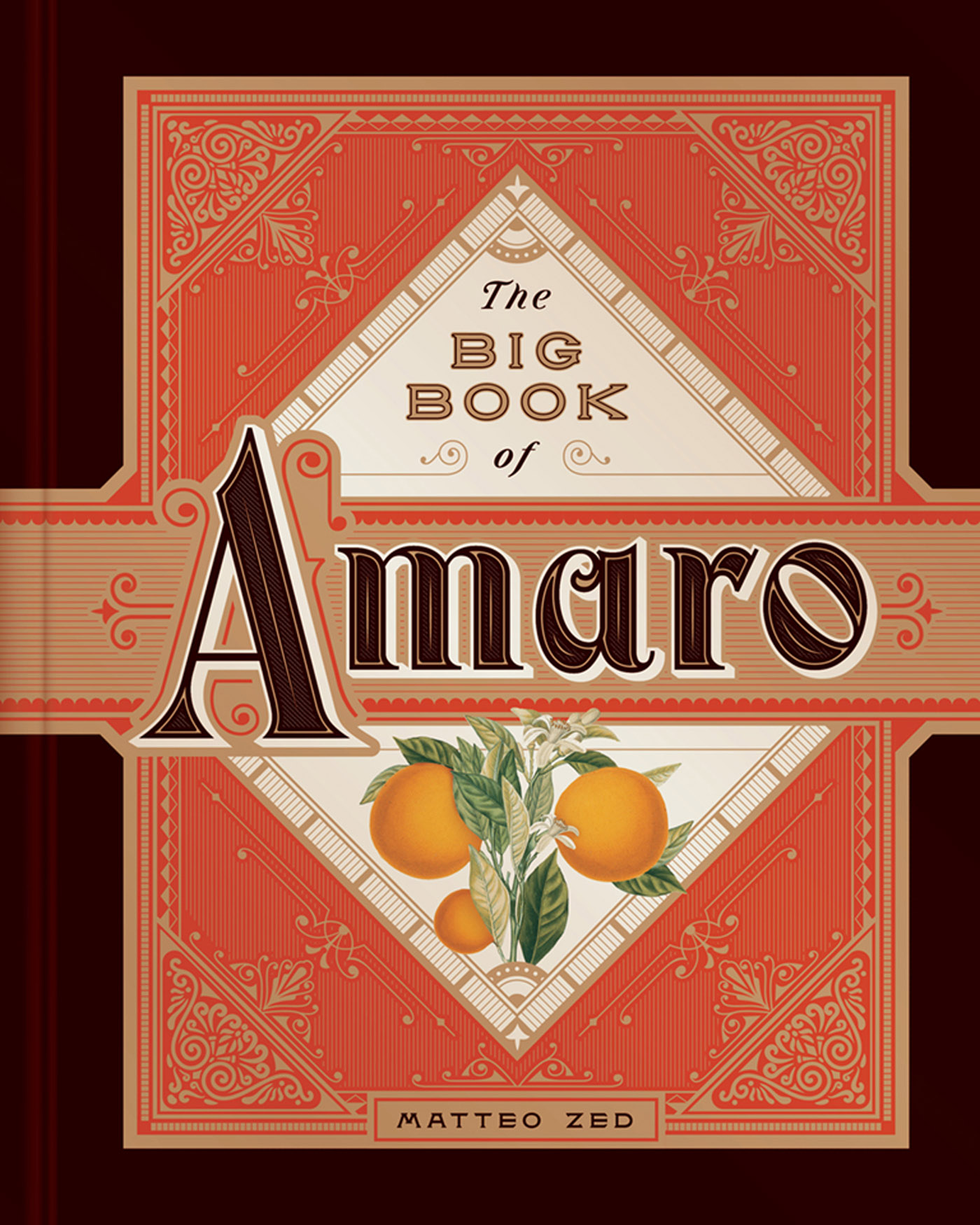Contents
Guide
Page List
The BIG BOOK of Amaro
MATTEO ZED

Like every good Italian, I have another great love in my life, other than amaro: my mother, Argia. I dedicate this book to her. She sacrificed her life for her family and, without her support, I would not be the person I am today.
CONTENTS

W E CAN IMAGINE THEM THERE, IN SALERNO, NEXT TO THE botanical garden flooded by sun, pounding herbs and roots in a mortar for the patients of the first medical school in Europe. We can see the great queen Catherine de Medici giving the French court a taste of the rosolio that came from her Italy (and woe to those who didnt like it). And then the alchemists who had given up making gold, the apothecaries of the monasteries in their stunningly scented rooms, the pharmacists who reinvented themselves as liquorists so as not to force patients to go to the doctor for a prescription each time they needed an ammazzacaff (literally a coffee killer). The story of Italian amaro is theirs. A story interwoven in the thousand territories of the country: Every little village has its amaro, every after-dinner has its flavor. The link with medicine matters; amaro must help digestion above all. But even at those tables where there is little to digest, liquor made in the kitchen from the herbs gathered around the house is one of the few luxuries within reach of many. Then, about half a century ago, tastes changed. All over the world, in fact.
Young people preferred smoking their herbs, consumption of liquor dropped dramatically, and the venerable Scottish distilleries as well as the provincial or regional liquor stores began closing. In the crisis of the 1970s only vodka remained, cheap (then) and not very tasty (even today): a suitable active ingredient to mix with lemonade, or to be tossed down in shots by Clint Eastwood types. Iced, so it doesnt burn your guts. Not right away, at least.
The fact is, the destruction left few desirable options: the usual friars whose amari sat in their showcases for years; bitter Campari, which, on the contrary, has no medical history but was created for pleasure; the monumental Fernet-Branca; and the sweet Averna, Montenegro, Lucano, and Strega. Those who didnt close simply got by, not even hoping to get out of the province where they were born.
In the end, Italians forgot about their amari, which were the most numerous and varied in the world. The great wine countries have no tradition of mixing and if a country has amari, there are even fewer thoughts about cocktails. But thats how, customarily, amari pale in the background without even nurturing a tradition of mixing.
For the turning point, we need the intervention of those who have that tradition: the Americans and the British. They too were facing a drop in consumption, and even their distilleries began to slow down. Rye whiskey came close to extinction: Eddie Russell of Wild Turkey said that one or two days of distillation per year were enough to meet demand.
But then people like Dale DeGroff, Salvatore Calabrese, Toby Cecchini, Dick Bradsell, Audrey Saunders, Sasha Petraske, Gaz Regan and Jim Meehan, Tony Conigliaro, Ago Perrone, and Dario Comini began working, some earlier than others. And this changed the world: They, along with many others, are the men and women of the renaissance of drinking. They opened bars where young people wanted to go, they broke the monopoly of fancy drinks in five-star hotels, places where ancient know-how had been protected and preserved but not introduced into the wider world. At least, not in the world of mass consumption. The bartenders on the other side of the ocean, or at least the English Channel, understood the value of amaro as a source of taste available to those who wanted to experiment. And they put intuition into practice. The spritz, even if the New York Times doesnt like it anymore, was the great vehicle: Bars modify it by spritzing prosecco together with other flavors. Campari and Fernet grew. If you see an amaro at the bottlers, it is likely that there is also some vermouth.
A couple of Italian relatives, one being spirits and the other being wine, become the trade secret of any Italian bartender who wants to work in the world. They are their curriculum vitae and their added value, their letter of introduction and the giant from whose shoulders they see into the distance. Vodka and gin are more versatile, rum more suitable for easy and thirst-quenching drinks. The biodiversity of the thousand new brands of amaro in Italy, crossed with the thousand different techniques and preparations, will never leave a bartender without cues. In a world where a bottle of vodka can cost $50 or even twice as much, you can put your amaro friends on the counter with half of half. And if youre looking for a profile for your new bar, take a walk on the amaro side: There, among grandfathers recipes, spectacular bottles, and spices youve never heard of, you may discover something special. For that I am grateful to Matteo Zed. With great humility and determination, he has built something with his own hands. The first Amaro bar in Brooklyn, the Il Marchese amaro bar in Rome, the first in Europe, the Amaro Obsession website, this book Matteo, in his own way, is an evangelist and a prophet. Lets hope he can be one in his own country. For himself, but also for all of us. Hes already converted me.
MARCO CREMONESI
E ACH ONE OF US IN THIS WORLD HAS OUR OWN OBSESSIONS. There are those who collect butterflies and those who aim to own a monumental home video library. There are those who would spend entire days watching trains pass by or admiring airplanes landing on airport runways.
And then there are those like me who are obsessed with the magical, immense world of amari. Ive been passionate about amaro for a lifetime, from the moment when I was very young and I chose to stand behind a bar counter, at $15 a day, to help a friend. Already famous in the 1980s, these spirits are experiencing a moment of authentic renaissance that sees them used not only as a digestive remedy but also as an exclusive ingredient in mixing and cooking.
In America, for example, talking about amaro today is like talking about gin. And it was precisely in the United States, where I had the opportunity to work, that I received the input to make this ancient yet modern family of Italian spirits mine in order to make it accessible to everyone. I am providing correct information but, above all, shining a spotlight on brands that are now appearing on the market, with excellent results, alongside historic brands. Observing American people approaching amari with such passion and curiosity has encouraged me to do my utmost to ensure that they are once again appreciated in Italy where, on the wave of a millenary tradition, the category has now flourished in terms of production.
And this is how I became an ambassador at home of what has been recorded at an international level as true amaro-mania.











